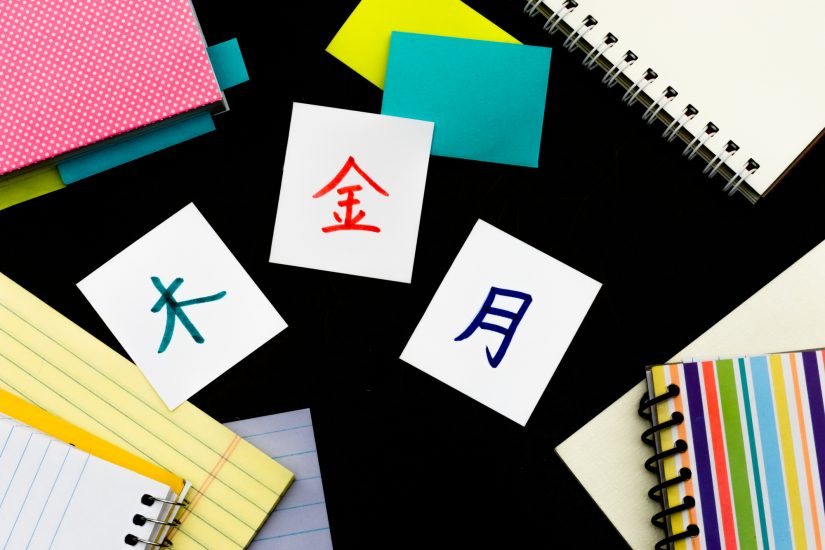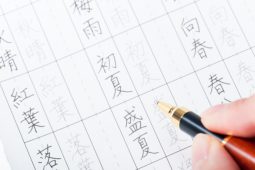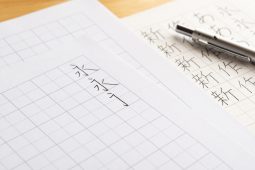This is Part 2 of a two-part article offering practical advice for studying kanji. In Part 1 we looked at how important context is for learning kanji. In Part 2 we will continue with our top tips for studying kanji and list some useful resources.
6. Read
You should read and read a lot. This is the single most important thing you can do to expand your kanji comprehension. You can start with simple readers aimed at language learners, or manga comics, or children’s books and then work your way up to more difficult materials. Just find something you enjoy reading and keep at it every day. With memorable contexts, the kanji will stick in your mind forever.
7. Read Your Environment
If you live in Japan, make a note of all the kanji you see in your neighborhood, and on your regular route to work or to the local supermarket. Look them up and learn what they mean. If you see these kanji every day in a real life context, they will be hard to forget. If you don’t live in Japan, you can try labeling all the objects and furniture in your house with sticky notes on which you have written the appropriate kanji. Again, seeing these kanji every day will give them a real and memorable context in your home environment.
8. Integrate Your Studies
Kanji do not exist isolated and abstracted from context. They are part of a language system. Wherever possible try to integrate the different threads of your Japanese studies. For example, if you are watching a Japanese movie, turn on the Japanese subtitles. Your reading of the subtitles will enhance your listening comprehension, and your listening will enhance your reading comprehension. A virtuous circle! You should also integrate kanji study with vocabulary acquisition. Keep a notebook for new words and when you jot down a word you have just learned, write down its constituent kanji too.
9. Consider Studying for the JLPT
The Japanese Language Proficiency Test (JLPT) is the standard criterion used to evaluate the Japanese language ability of non-native speakers of Japanese. It is not an easy test to study for and it has some flaws. For example there is no oral component to the test. However, there are some great textbooks available to help you study for this course and if you work your way up to the top level Grade N1 test and pass it, you will definitely know your jōyō kanji and you will be able to read Japanese.
10. Useful Resources
The first volume of the Basic Kanji Book published by Bonjinsha is a good book for beginners. You will learn 250 basic kanji the old-fashioned way, by writing them out stroke-by-stroke. This book also has a variety of writing and reading exercises and visual aids that will help you to remember these kanji in context. Although practicing kanji by writing them out repeatedly is not a practical long-term strategy, in the short term it will help you to remember the basic rules of stroke order and also to understand the visual balance of a well-written kanji. These are useful skills to have if you ever need to fill out documents, visa application forms, or simply write an address. The Bonjinsha series continues with more books, but beyond the first volume you probably don’t need to continue studying this way. Nevertheless, this first volume will give you a good foundation on which to base your further studies.
A Guide to Remembering Japanese Characters by Kenneth G. Henshall is a useful reference tool. Henshall breaks each kanji down into their component radicals, explains their etymology, and offers a suggested mnemonic for each kanji. Probably you will want to create your own mnemonics but Henshall’s suggestions are a good place to start.
The Shin Kanzen Master (新完全マスター) series of textbooks is particularly recommended for the kanji and reading elements of the Japanese Language Proficiency Test.
Memrise is a popular website and smartphone app which offers free digital flashcard sets and employs the Spaced Repetition System (SRS) to help you remember. This is useful aid for picking up beginner’s kanji, kanji radicals, or studying for tests.
News Web Easy is a website produced by NHK with simplified news stories and furigana readings for all kanji. It’s a great site for beginners who want to build up their kanji reading ability. Check it out here:








